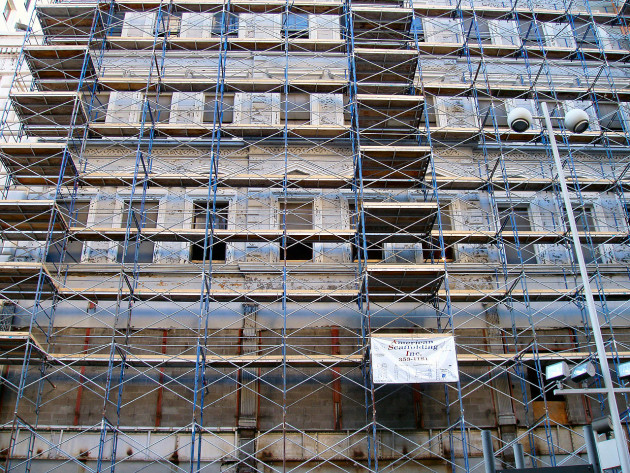Have you ever looked up at a scaffolding tower, and wondered how people could get their tools to the top? The way they do that is through a scaffold hoist. And if you’re looking for scaffolding for sale, you need to make sure that it includes hoists as well.

What Is a Scaffolding Hoist?
Heavy machinery, bricks, and other tools can be very difficult to get to the top of a tall scaffolding tower. This beats the object of having a scaffolding tower in the first place. Because of this difficulty, the scaffolding hoist was developed. It is made to lift various loads, weighing as much as 800kg, from the ground to the level at which operators are working, where they then unload the goods. Doing this greatly speeds up time of production, and with that the productivity of the workforce as a whole.
Usually, a scaffold hoist uses a motor, generally a 110v or 230v single phase power. These sources are found on most construction and building sites. They also come with a range of different accessories, like wheelbarrow slings, hoist gantries, and window props. Additionally, cement buckets and brick baskets are very popular. These can usually lift 90 liters, although some are even larger.
Usually, the height of the lift that is used on the majority of scaffolding hoists is 25 to 30 meters in length. Usually, this is more than enough, but if you do require a larger height, then you can usually extend the hoist by lifting the drum and simply adding some more rope. The load is secured in place thanks to a snap hook placed on the end of the wire.
If you take a look around a building site, you will find that most construction workers keep the hoist in place with specially designed scaffold pipe clips. Sometimes, however, it is necessary to secure the hoist to a gantry or window frame. In this case, some added accessories will be required. Plus, as time goes on, there have been further developments in the world of scaffolding, which is why there are now even hoists with remote control options. This is not just practical, but also a lot safer. Scaffolding pipes usually have a rating of up to 200kg, which is why most builders will not be willing to hoist anything heavier than that. If there is something that needs to be lifted with a hoist, it will require a counter weight system, which will allow lifting of up to 800kg.
If you find that the scaffolding hoist breaks down, it can be tempting to purchase some spare parts. Do make sure, however, that those parts are new and come from a registered supplier. This will ensure the safety and security of your equipment, as well as giving you a warranty. While it may be tempting to opt for a second hand model, because it is cheaper, this will not maintain your safety. And since you are working at heights, with heavy weights, safety has to come first.
